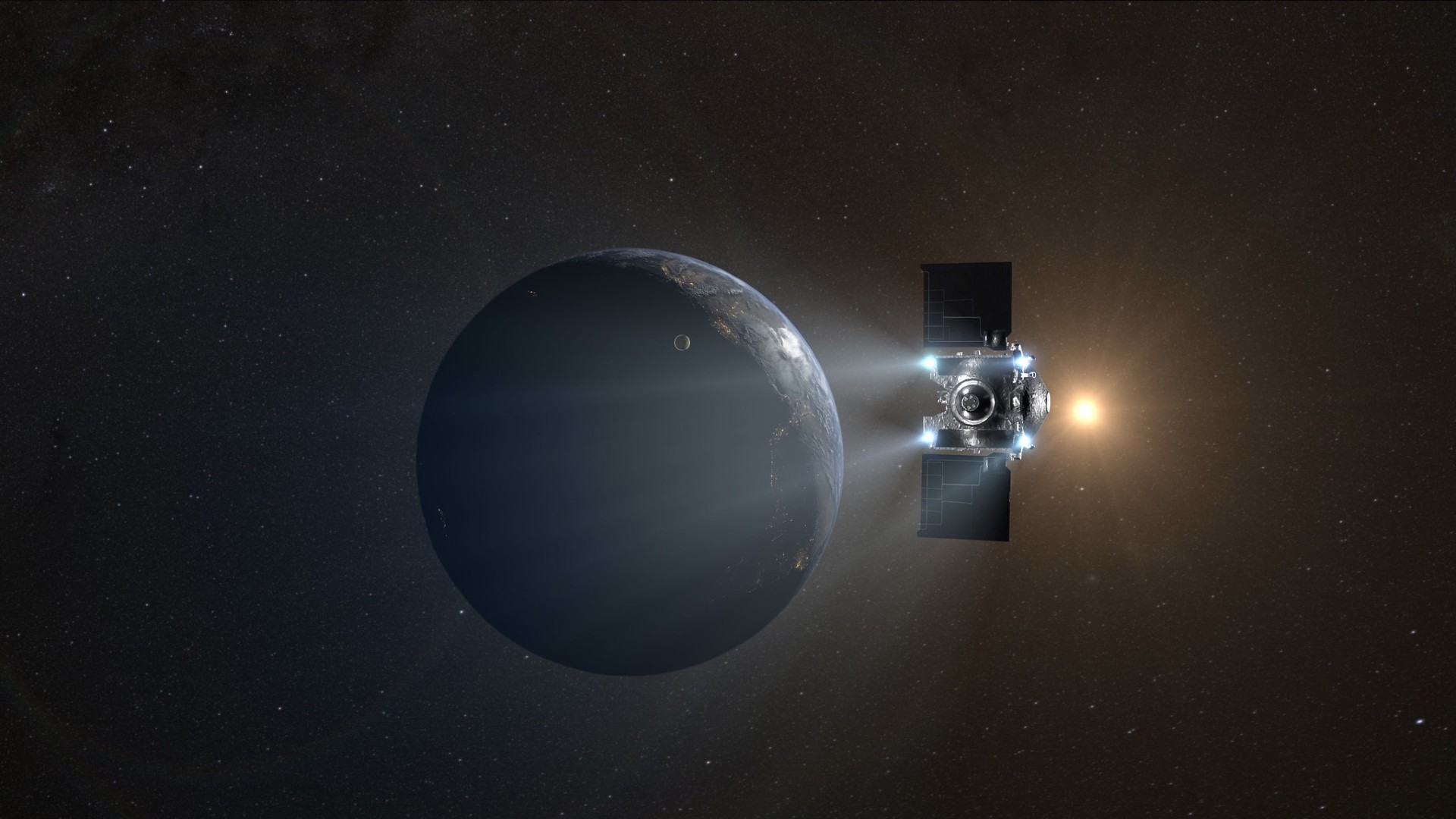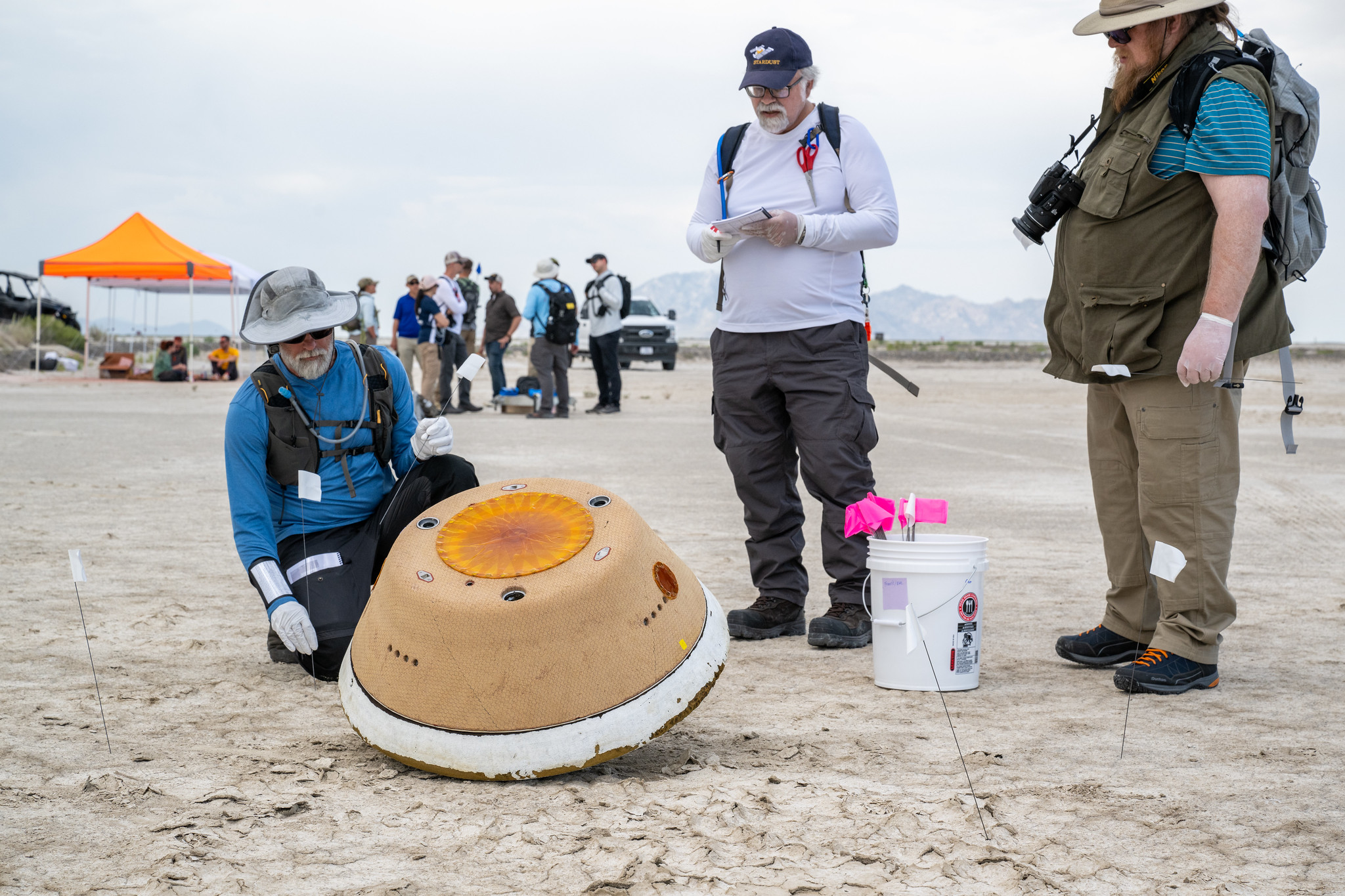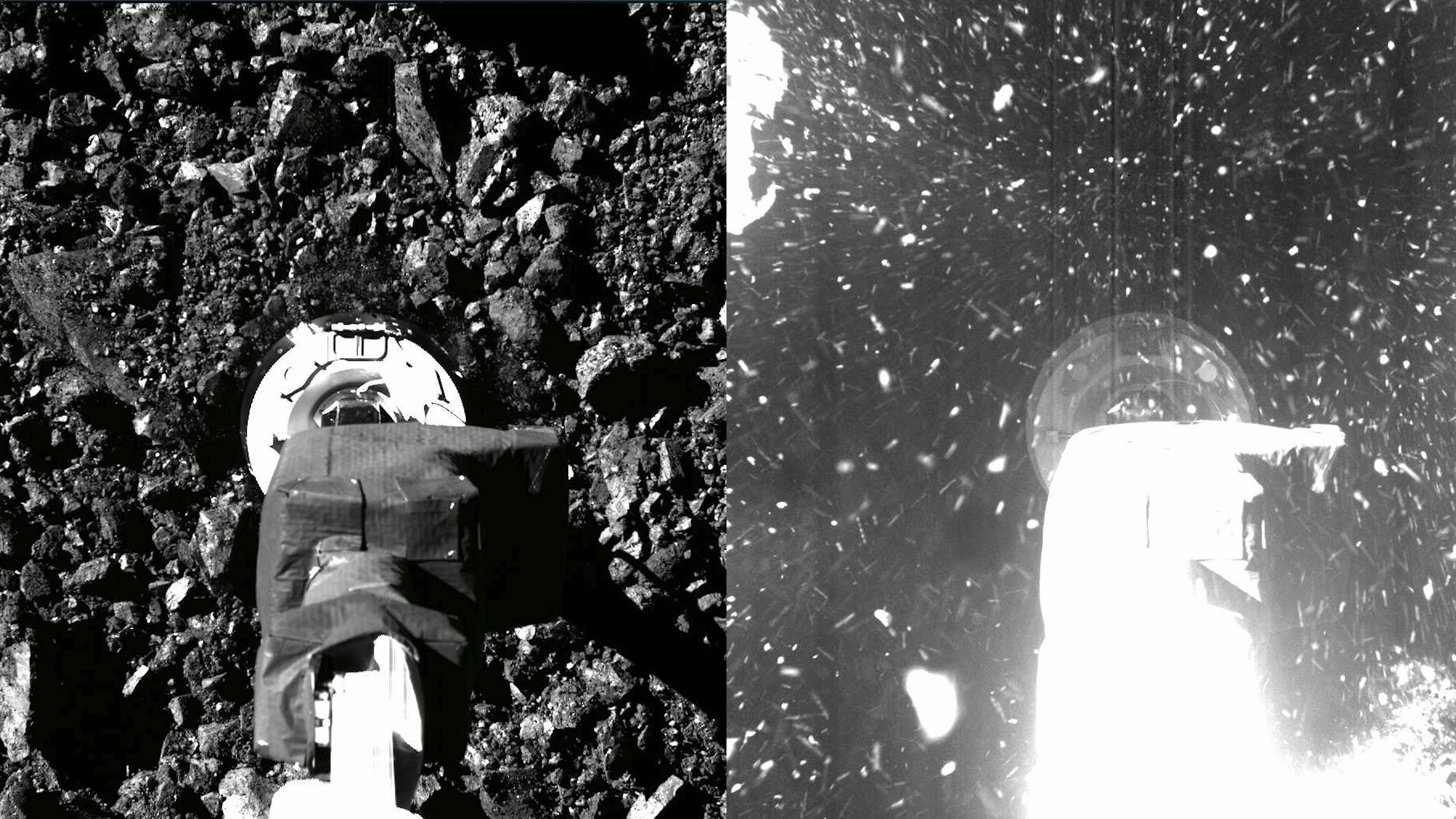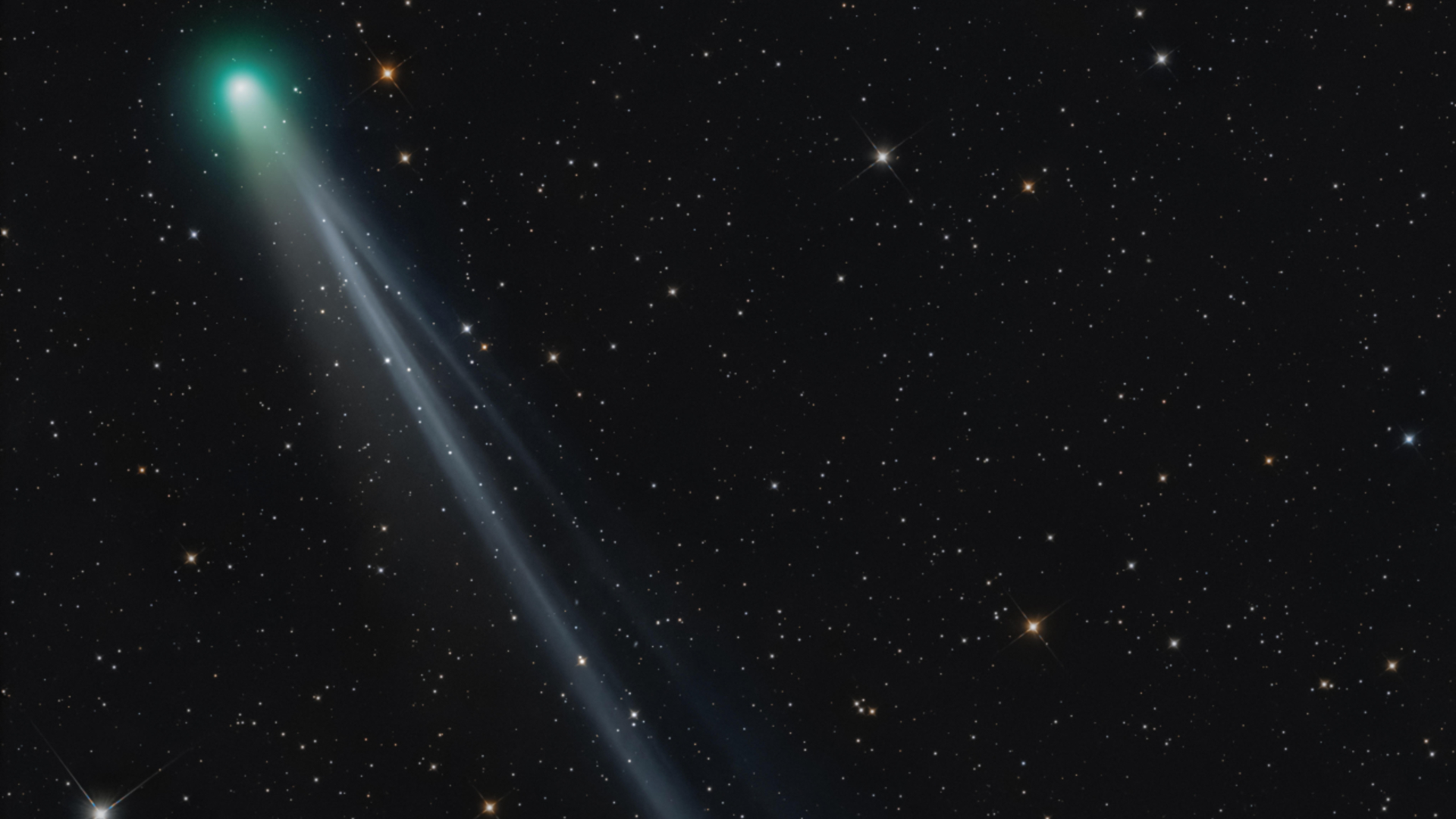Will NASA's OSIRIS-REx stick its asteroid sample landing? Scientists are 'very much confident' as zero hour nears
"OSIRIS-REx has been so successful because we continue to pay attention to the details."

It's the final countdown.
NASA's $1 billion OSIRIS-REx sample return mission is less than 48 hours away from its dramatic landing in the Utah desert. The OSIRIS-REx spacecraft (which stands for "Origins, Spectral Interpretation, Resource Identification, Security-Regolith Explorer") is currently heading toward Earth while carrying precious cargo: A capsule containing somewhere around 8.8 ounces (250 grams) of material gathered from asteroid Bennu in 2020.
After being released by the OSIRIS-REx spacecraft at an altitude of about 63,000 miles (101,000 km) above Earth, the capsule should land in the Department of Defense's remote Utah Test and Training Range (UTTR) on Sunday (Sept. 24) at 8:55 a.m. MDT (10:55 a.m. EDT, 1455 GMT). You can watch the landing here at Space.com courtesy of NASA.
OSIRIS-REx mission managers held a briefing Friday (Sept. 22) to talk through final preparations for the capsule's return and discuss the present health of the spacecraft. "Everybody really feels a buzz of being less than two days away from having the Bennu samples on the ground," Sandra Freund, OSIRIS-REx program manager at Lockheed Martin, said during the briefing. "We are are very much confident that all will go exactly as planned on Sunday morning. Our navigation and spacecraft performance has been exceptional and we are headed right for landing in the Utah Test and Training Range."
Related: How NASA's OSIRIS-REx will bring asteroid samples to Earth in 5 not-so-easy steps
Read more: OSIRIS-REx's asteroid sample will come down to Earth on Sept. 24. Here's how to watch it live.
The OSIRIS-REx spacecraft made its final maneuver on Sept. 17 that put it on a precise course toward our planet and, as Freund said, the mission looks to be right on track so far. "No additional maneuver opportunities were needed. The spacecraft trajectory and performance has just been spot on."
However, the spacecraft will still need to adjust its orientation so it's pointed where it needs to be to release the asteroid sample capsule to hit its target. Mission planners will hold an additional meeting early Sunday morning (Sept. 24) to poll whether capsule release is a "go" or "no-go."
Breaking space news, the latest updates on rocket launches, skywatching events and more!
But OSIRIS-REx team leaders are confident that things will go as planned, based on how the mission has gone so far. "OSIRIS-REx has been so successful because we continue to pay attention to the details, thinking through all possible contingencies," said Dante Lauretta, principal investigator of the OSIRIS-REx mission. "For example, if the sample capsule were to open even briefly, we would want to make sure any sample material that made it onto the Utah desert floor was quickly identified and recovered, so that we could still extract meaningful science from it."
During the briefing, mission leaders pointed to another example, an issue that popped up in October 2020 when the OSIRIS-REx spacecraft's sample collector got jammed open and lost some material to space. This prevented the crew from measuring the mass of the collected asteroid material in full. But teams at Lockheed Martin, the aerospace contractor who built the spacecraft, were able to find a workaround and OSIRIS-REx scientists ultimately estimated the mass to be around 250 grams (8.8 ounces), plus or minus 101 grams (3.6 ounces).
"And that's good news because the mission requirements that I promised Lori [Lori Glaze, director of the Planetary Sciences Division at NASA] and the headquarters team was that we would bring back 60 grams [2.1 ounces]. So even at the low end of that estimate, we're well above our mission requirement," Lauretta said.
If the capsule makes it safely to the desert floor, it will be met first by U.S. Air Force personnel who will secure the landing site and make sure it's safe for the next step, which involves recovery teams. From there, the capsule will be picked up by a Department of Defense helicopter and immediately transported to a temporary clean room set up at Dugway Proving Ground, a U.S. Army installation tasked with testing chemical and biological defense equipment.
Once securely inside the cleanroom at Dugway, the capsule will be opened and the canister containing the samples of asteroid Bennu will be readied for transport once again. They will then be flown to NASA's Johnson Space Center (JSC) in Houston, Texas where they will have their own newly-built facility waiting for them, the agency's Astromaterials Research and Exploration Science (ARES) division.
The capsule hardware itself will be curated at JSC, and may be made available for "space-exposed hardware studies, or other similar kinds of scientific or public uses," Glaze said during the briefing.
If all goes according to plan, the OSIRIS-REx team will then spend two years analyzing the material returned from Bennu. That analysis could give scientists a better understanding of the role carbon-rich asteroids like Bennu possibly played in seeding Earth with the building blocks of life, or help get a better idea of what the earliest eras of our solar system were like. To help with the study of the asteroid material, over 200 researchers at 35 different facilities will be given access to 25% of the material recovered from Bennu.
70% of the material, meanwhile, will remain at Johnson Space Center where it will be studied for years to come by "scientists not yet born, using technologies not yet invented, to answer fundamental questions about the solar system," NASA's official OSIRIS-REx press kit states.
The remaining 5% will be divided between the Canadian Space Agency, who will get 4% of the sample in return for developing the laser altimeter flown aboard OSIRIS-REx probe, and the Japan Aerospace Exploration Agency (JAXA), who will get 0.5%.
The mission is NASA's first to collect an asteroid sample, but the third worldwide. Japan previously flew two missions to accomplish such a task: Hayabusa 1 collected dust and sand from asteroid Itokawa and returned the samples in 2010; and Hayabusa 2, which landed on asteroid Ryugu in 2019 returned its samples in 2020.
And though it remains unknown whether OSIRIS-REx will stick its landing, Lauretta is confident that no matter what happens on Sunday, his team will be rewarded with valuable scientific data from this mission.
"This is a hallmark of OSIRIS-REx from the very beginning of concept development through design, build test launch operations, and now sample curation and sample analysis," Lauretta said. "We've always taken a deliberate, careful, cautious approach. And I think that's why this mission has been so successful up to this date. We don't let our enthusiasm get ahead of us."
Join our Space Forums to keep talking space on the latest missions, night sky and more! And if you have a news tip, correction or comment, let us know at: community@space.com.

Brett is curious about emerging aerospace technologies, alternative launch concepts, military space developments and uncrewed aircraft systems. Brett's work has appeared on Scientific American, The War Zone, Popular Science, the History Channel, Science Discovery and more. Brett has English degrees from Clemson University and the University of North Carolina at Charlotte. In his free time, Brett enjoys skywatching throughout the dark skies of the Appalachian mountains.


